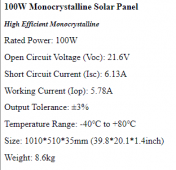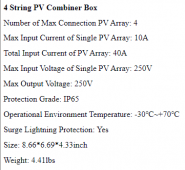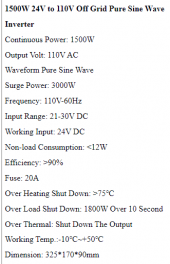I have an Eco-Worthy 1500W Off Grid Pure Sine Wave Inverter and have a question concerning low-voltage shutdown.
I am going to be out of town for most of the day and won't be back until after dark. My solar will run all day and power my house but will not last through the evening (after sundown) and into the night. Once the voltage drops low enough, my inverter starts beeping with the low-voltage warning and eventually the power inside shuts off. The low-voltage warning continues until I actually shut off the inverter.
My question is this....
Once the power automatically shuts down in my house and is no longer drawing off of my battery bank, if the inverter's On/Off switch is not physically turned off and the low-voltage warning keeps beeping, will this continue to drain my battery bank until the inverter switch is turned off? I just don't want to damage my battery bank or my inverter by letting the warning signal continue to go off. I am not using LifePO batteries, just sealed lead deep cycle batteries.
Thanks for any help!
I am going to be out of town for most of the day and won't be back until after dark. My solar will run all day and power my house but will not last through the evening (after sundown) and into the night. Once the voltage drops low enough, my inverter starts beeping with the low-voltage warning and eventually the power inside shuts off. The low-voltage warning continues until I actually shut off the inverter.
My question is this....
Once the power automatically shuts down in my house and is no longer drawing off of my battery bank, if the inverter's On/Off switch is not physically turned off and the low-voltage warning keeps beeping, will this continue to drain my battery bank until the inverter switch is turned off? I just don't want to damage my battery bank or my inverter by letting the warning signal continue to go off. I am not using LifePO batteries, just sealed lead deep cycle batteries.
Thanks for any help!







